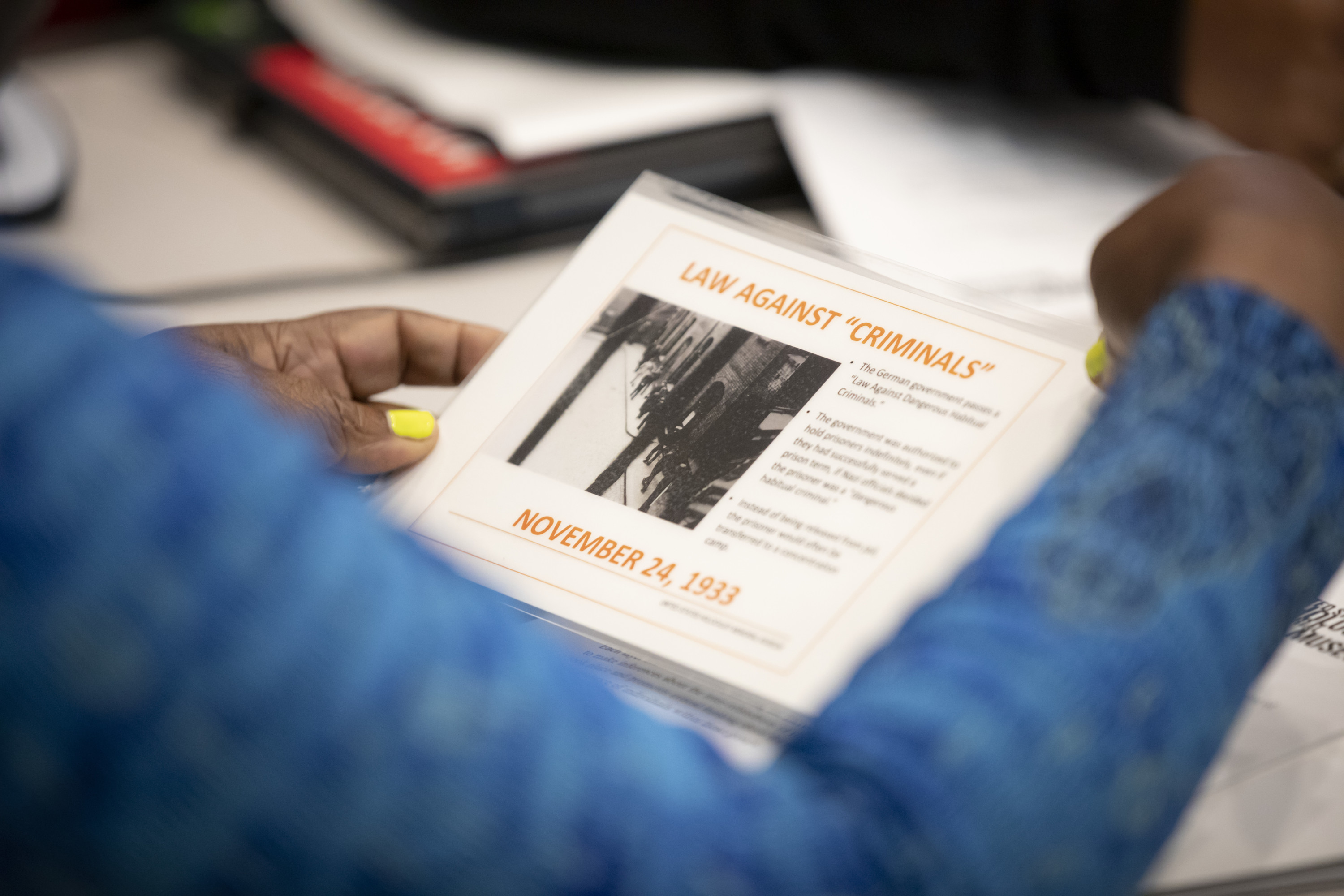US Holocaust Memorial Museum educators and historians created these lesson plans for use in secondary classrooms. Click on a lesson plan to see its recommended grade level, subjects covered, and time required to complete. To explore lessons organized by theme, visit Teaching Materials by Topic.
-
Lesson: Modern-Day Genocide, A Study of the Rohingya Minority in Burma
The Rohingya, a religious and ethnic minority in Burma, went from being citizens to outsiders and became the targets of a sustained campaign of genocide. By exploring the online exhibition Burma’s Path to Genocide students learn how government policies and the proliferation of hate speech led to genocide of the Rohingya. Rohingya are still at risk of genocide today.
-
Lesson: Racial “Science” and Law in Nazi Germany and the United States
This lesson is a case study examining Nazi Germany and the United States during the 1930s, at a time when racism and eugenics were enshrined in law and practice. Students will examine the national and historical contexts in which racism manifested in the two countries, and explore how the pseudoscience of eugenics as well as concerns about "racial purity" found its way into the laws of the United States and Nazi Germany.
-
Lesson: The Refugee Crisis
Produced in partnership with Facing History and Ourselves, this unit shifts students’ study of World War II and Nazism to the other side of the Atlantic. The three-lesson unit deeply explores the motives, pressures, and fears that shaped Americans’ responses to Nazism and the humanitarian refugee crisis it provoked during the 1930s and 1940s. By examining primary sources that range from public opinion polls to personal narratives to radio plays, students will explore why widespread American sympathy for the plight of Jewish refugees never translated into widespread support for prioritizing their rescue. The unit also highlights the stories of individual Americans who did take tremendous risks to rescue Jews, as well as the questions this history raises for taking action in the context of contemporary refugee crises.
-
Lesson: Rescue and Survival in Hiding
This lesson focuses on the role that everyday objects play in our understanding of historical events.
-
Lesson: Resistance During the Holocaust
Students learn the various forms of resistance during the Holocaust and explore examples from 1933–45.
-
Lesson: Spanish-Language Newspaper Coverage of the Holocaust (History Unfolded)
By focusing on how Spanish-language newspapers in Texas, California, and Puerto Rico reported on the voyage of the St. Louis, students will connect Holocaust history to American history and develop primary and secondary source reading and analysis skills in Spanish.
-
Lesson: US Newspapers and the Holocaust (History Unfolded)
Students investigate what information about the Holocaust was available in their communities by doing original research using historic newspapers found online or in a local library. Through an analysis of their discoveries, they better understand American responses to the Holocaust within the socio-economic and political context of the United States during the 1930s and 1940s.
-
Lesson: Youth Responses to News of the Holocaust (History Unfolded)
Through a case study of American news coverage of the Nazi persecution of Jews in the 1930s and 1940s, students will learn what information some college and university newspapers at the time reported about the Nazi persecution of Jews, as well as some ways students responded to news of the Holocaust.
-
Lesson: Holocaust Literature Guide
Students analyze and think critically about the impact of state-sponsored antisemitism and the intersections of World War II and the Holocaust using two foundational resources from the USHMM: the Timeline Activity and the film The Path to Nazi Genocide.

